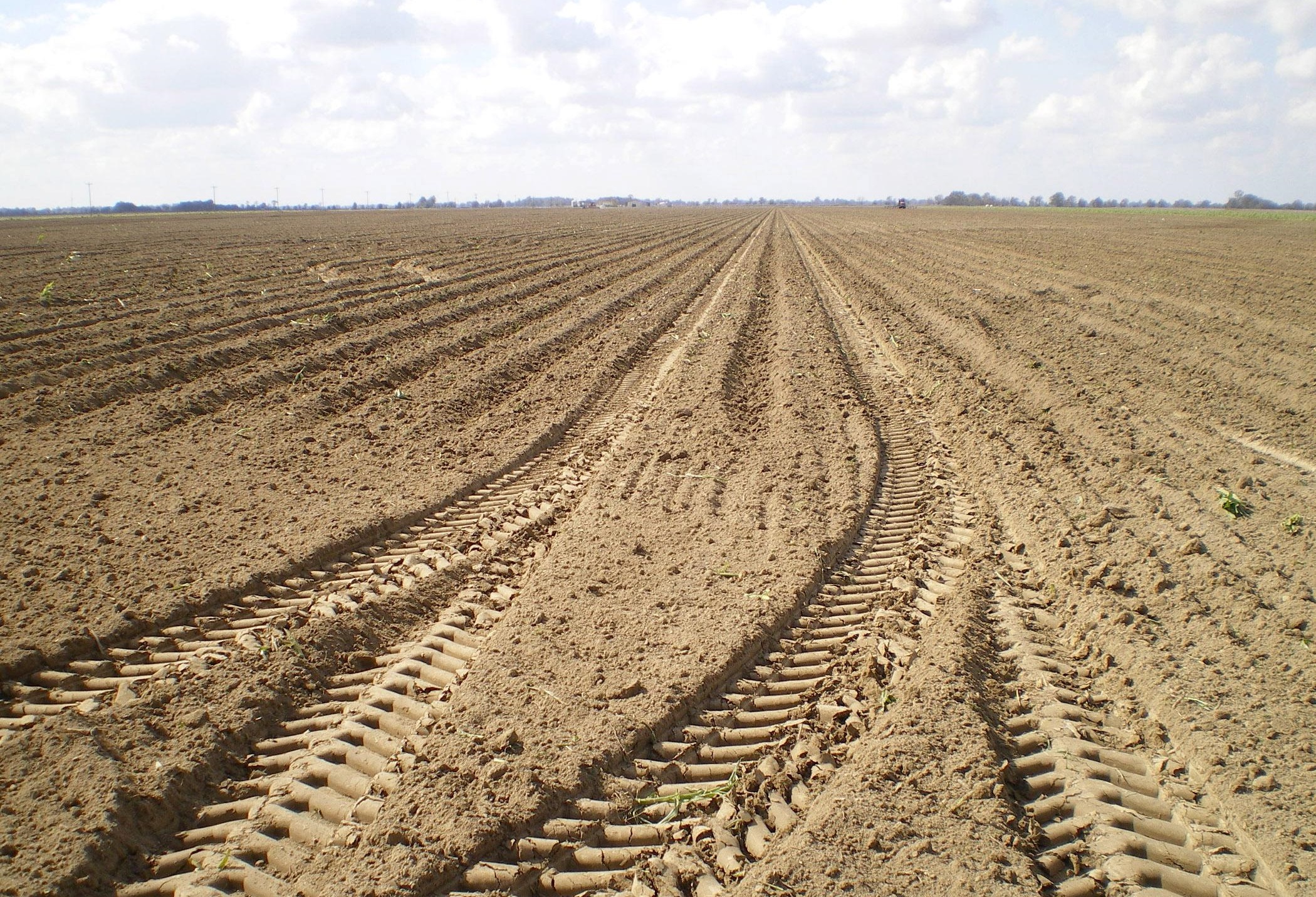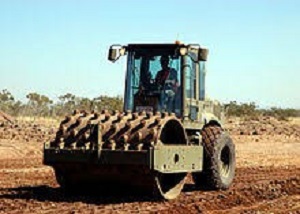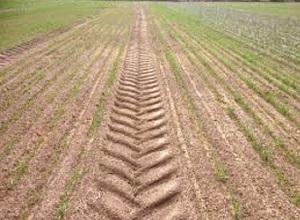Soil Compaction Robs Yields and Profits
Soil compaction is a significant issue in production agriculture around the world. It can be caused by several processes and/or activities in your crop management practices. Essentially, soil compaction is defined as an increase in bulk density (weight of soil at a given volume) and/or a decrease in porosity (air exchange) within a soil. It degrades the structure of a soil, and degrades the soil’s ability to drain, exchange nutrients, sustain microbial life; prevents ideal root development, and other important functions in an agricultural system. When combined with soil erosion, soil compaction is considered the most expensive and serious environmental problem caused by mechanized agriculture.
Compaction is complex. Many factors interact to create a compacted soil. The texture, organic matter, crop rotation, weather, machinery traffic, chemical-based fertilizers, and other factors can come together to create a compaction problem. It can sneak up on you over several years, often times invisible to the naked eye, and can be very difficult to manage once it sets up; depending on the type of compaction. It has even been linked to effects on soil erosion and water runoff; greenhouse gas emissions; eutrophication (rapid aging of surface waters); reduced groundwater recharge; and a loss of biodiversity in your community.
There are primarily three types of Compaction:
Surface Compaction: also termed ‘topsoil compaction’…this is compaction that occurs at the surface of the soil, in the ‘Organic’ horizon and shallow ‘A’ horizon. It can be caused by excessive traffic, lack of vegetation in lanes between rows, repetitive shallow disking or harrowing; heavy rain and then rapid drying; a lack of adequate organic matter in the surface of the soil; excessive, repetitive application of chemical fertilizer as a topdress without incorporation (resulting in salt accumulation in the surface soil); and other factors. This is the easiest type of compaction to correct by ‘fracking’ the surface of the soil followed with a conscientious rotation plan and maintaining residue in that surface soil. Residue can be living (as in a sod or companion cover crop); or dead (as in minimum tillage systems where the biomass from previous plants and crops is retained).
When clearing new ground with heavy equipment, the shearing activity of bulldozers and heavy equipment can significantly increase surface compaction. This is why it’s generally recommended to plant either a perennial cover crop or a sequence of annual covers like rye or wheat that can support a healthy surface soil before intensively cropping it.
| In construction, levelling and compacting, such as in roadbed construction; is a must.
In agriculture, it can be a demon. After clearing and levelling land, a cover crop that can establish across the field helps alleviate problems down the road when trying to produce crops. |
|
| Repetitive traffic, monoculture systems, cultivating and overworking clayey or ‘tight’ soils’, all can come together to create surface soil compaction.
Rotation, surface fracking, controlling the number of times you cultivate and work the surface soil, all can improve this condition, which can be serious. Source: Australia Department of Primary Industries and Regional Development |
Plow Layer Compaction: this type of compaction is more difficult to determine as it’s a slow degradation of the soil’s health due to repetitive moldboard plowing; planting the same crop year after year, and not replenishing the organic matter in the plow layer (surface 8” is a guide). It’s most common in ‘monoculture’ systems where you plant several years of an annual crop like corn and provide all the crop’s nutrition with chemical fertilizers. It is corrected using an integrated approach to cultural practices. These practices include rotating crops into the field that have different rooting systems so that the plow layer’s general soil health improves. Similarly, planting cover crops between the crops in a rotation assists in mitigating plow layer compaction. Rotating tillage itself is another method of replenishing the soil health of a plow layer… Moldboard after perennial sod, followed by minimum tillage with a chisel plow the second year, followed by no-till the next year, and so on. Finally, minimizing tillage of all kinds in wet soils will help prevent this type of compaction.
Maintaining a healthy plow layer is crucial to success. The soil on the left has very little porosity, so air cannot exchange with the soil, allowing for the ‘life’ of the soil to persist. Water runs off, taking nutrients and water to the nearby surface water, which in the bigger picture, can pollute these bodies of water and stealing your profits and efforts. Source: https://www.jonathangreen.com
Subsoil Compaction: of all the types of compaction, this one is the most difficult to repair. It occurs because of repetitive tillage using a moldboard plow. The bottom of the plow shearing the soil at the same depth year after year literally can cause an impermeable layer below. This becomes more of a problem when practices, as mentioned above causing ‘plow layer’ compaction, are in place. Correcting sub-soil compaction most often involves the use of a ‘subsoiler’. This type of implement travels at depths well below the surface (12” up to 36”). They are designed to break up this ‘plow pan’ so as to provide water to travel more easily through the subsoil. Using a subsoiler on soils with a high water table can actually create more problems if the ‘hardpan’ well below the surface is actually preventing subsoil water from creeping up into the rooting zone as in the case of live springs in the field. Breaking up that hardpan indiscriminately can actually make the field too wet to work…
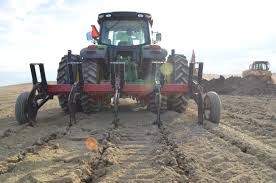 |
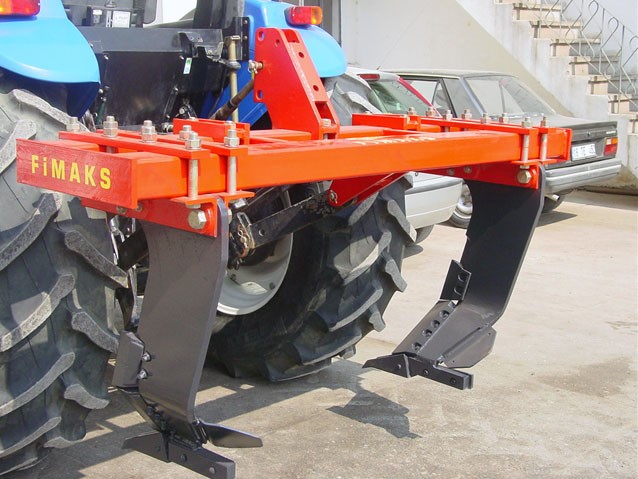 |
| A subsoiler travels at depths below the plow layer to ‘frack’ the hardpan created by traffic, plow layer degradation, or ‘plow pans’. Source: https://www.duraroot.com | The ‘Paraplow’ is a type of subsoiler that travels below the rooting zone and actually breaks-up the entire span of soil under the zone. Watching them operate is quite interesting as seen in the video link below. Source: https://www.sajware.com |
Video:
The moral of the story… know your soils.. know your compaction.
Read more about it:
Yield Loss Associated with Soil Compaction – Dura Root
Identifying Soil Compaction – DPIRD – Australia
Soil Compaction – Agricultural – Wikipedia
Compacted soil prevents ideal root development


